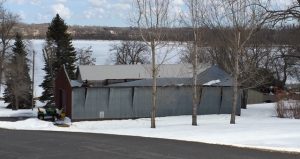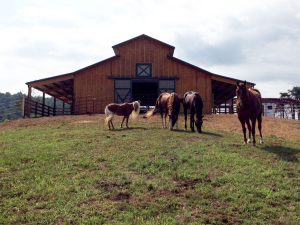Day 2 of a three part series by guest blogger Dr. David Bohnhoff, Phd. P.E., Professor Emeritus at the University of Wisconsin-Madison.
 If you understand the information from yesterday’s blog, then you know that when someone tries to sell a farmer a building “designed to withstand a BALANCED snowload of XXX psf” that farmer should slam the door in the salesperson’s face. Obviously, that salesperson and the company he/she represents are not selling structurally engineered buildings. More often than not, they are selling a building that includes a truss that has been sized using methodology only appropriate for a small, residential building, and it is quite likely that not a single load calculation has been performed, and thus not a single component or connection has been properly sized/detailed for the loads to which it will likely be subjected. When you sell a structurally engineered building, you talk about the performance codes and standards that were used in its design. You talk about the code-specified GROUND snow loads in the area that were used IN PART to determine the complex load combinations required to properly engineer the building.
If you understand the information from yesterday’s blog, then you know that when someone tries to sell a farmer a building “designed to withstand a BALANCED snowload of XXX psf” that farmer should slam the door in the salesperson’s face. Obviously, that salesperson and the company he/she represents are not selling structurally engineered buildings. More often than not, they are selling a building that includes a truss that has been sized using methodology only appropriate for a small, residential building, and it is quite likely that not a single load calculation has been performed, and thus not a single component or connection has been properly sized/detailed for the loads to which it will likely be subjected. When you sell a structurally engineered building, you talk about the performance codes and standards that were used in its design. You talk about the code-specified GROUND snow loads in the area that were used IN PART to determine the complex load combinations required to properly engineer the building.
The fact that some companies are selling large agricultural buildings which are not fully engineered is shear lunacy and highly unethical if not criminal. When these same builders blame the failure of their buildings on a rare heavy snowfall, instead of their lack of providing a structurally engineered building, they are being deceitful/fraudulent. They also must take farmers and the rest of the general public as idiots. How else can you convince someone that a rare heavy snowfall is the culprit when the percentage of agricultural building failures due to a given snowfall is magnitudes greater than it is for other commercial and residential buildings in the same area. Along these same lines, how misleading is it to state something like “the snow loads exceeded those we used in design” when you never structurally engineered the building in the first place?
Over the years I have visited and read about an incredible number of agricultural building failures. I have seen piles of dead animals, and yet the problem with non engineered buildings has only gotten worse. Why is this you may ask yourself? Why does it happen in the first place? Why hasn’t the government done something about it? Why hasn’t the industry done something about it? Why don’t the insurance companies care? Where are the lawyers in all of this? These are all great questions with reasonable answers.
 First, why has the number of agricultural building failures increased, especially at a time when the number of farming operations has decreased? Simply stated, larger and larger non-engineered buildings are being constructed. Unfortunately, there is a double whammy that comes into play here. As previously explained, larger buildings get hit with more complex loads, and if a building is not engineered to handle these loads, the probability of failure increases. Second, when you double the size of a building, you double the number of components in the building. In the case of a non-engineered building, you double the number of undersized components and/or connections. Thus a building that is twice as large has double the probability of a localized failure. The problem is that this localized failure can bring down a large portion of the structure if you are not careful. For this reason it is fundamentally important to incorporate mechanisms into large buildings that limit the extent of a progressive collapse (something that is absolutely not done in a non-engineered structure).
First, why has the number of agricultural building failures increased, especially at a time when the number of farming operations has decreased? Simply stated, larger and larger non-engineered buildings are being constructed. Unfortunately, there is a double whammy that comes into play here. As previously explained, larger buildings get hit with more complex loads, and if a building is not engineered to handle these loads, the probability of failure increases. Second, when you double the size of a building, you double the number of components in the building. In the case of a non-engineered building, you double the number of undersized components and/or connections. Thus a building that is twice as large has double the probability of a localized failure. The problem is that this localized failure can bring down a large portion of the structure if you are not careful. For this reason it is fundamentally important to incorporate mechanisms into large buildings that limit the extent of a progressive collapse (something that is absolutely not done in a non-engineered structure).
So as absolutely nutty as it is to put up a large building without structurally engineering it, why is it done? The answer is simple, there is no law requiring structural engineering due to the exemption provided in SPS 361.02(3)(e) AND builders who engage in the practice of selling and erecting non-engineered buildings can undercut the sales of those who don’t. The problem is, those who erect non-engineered buildings are putting people and animals in danger (extreme danger in many cases), and are sullying the reputation of the entire industry. Almost without exception, those erecting non-engineered buildings are small, local builders who (1) do not have a national reputation to withhold, and (2) don’t have deep pockets.
Come back tomorrow for Part III, the conclusion to Dr. Bonhoff’s expose on non-engineered buildings and why they fail under more than “normal” snow loads.






